There are two main types of loft conversion: dormer and Velux.
There are four less common types: hip-to-gable, pitched dormer, mansard, and piggyback.
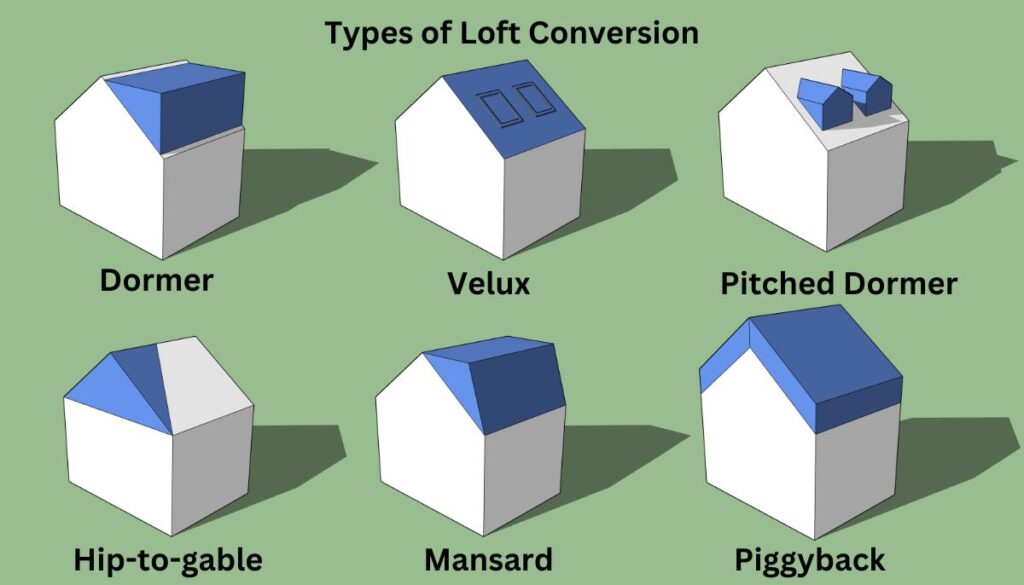
In most cases you’ll want a dormer or a Velux conversion. But I’ll give you a rundown of all six types, explaining where they’re suitable, their downsides, and if they need planning permission.
Dormer
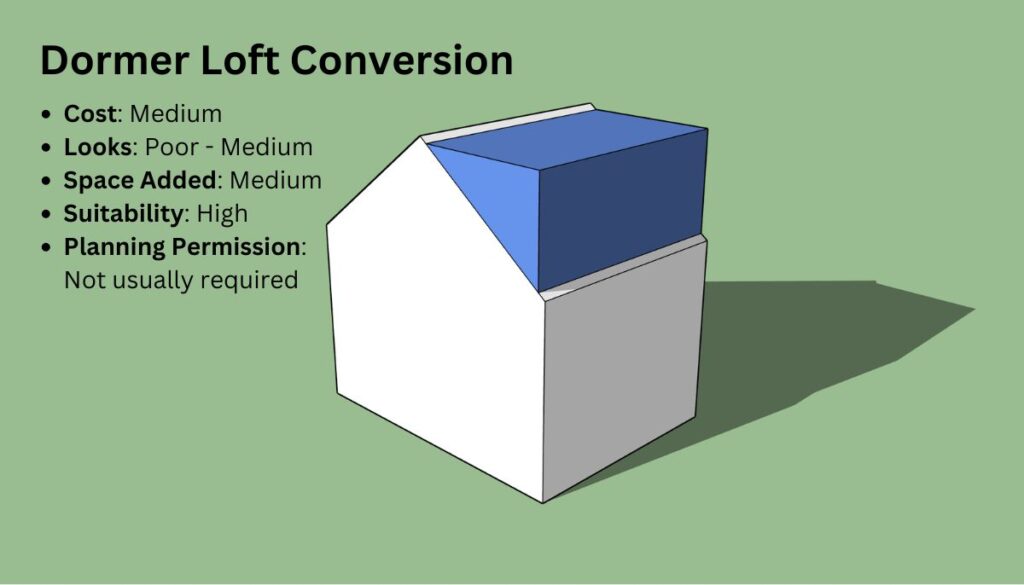
Easily the most popular type of loft conversion, the dormer is the classic box you see jutting out from the roof. It usually starts slightly inset from the gutter and the roof ridge to satisfy permitted development rules.
- Suitable for: most properties, especially where the existing loft space needs additional standing room.
- Downsides: not always visually appealing (if done poorly). Matching tiles/bricks to your existing property go a long way.
- Planning permission: not required in most cases, as it falls under permitted development (especially if at the rear of the property)
Velux
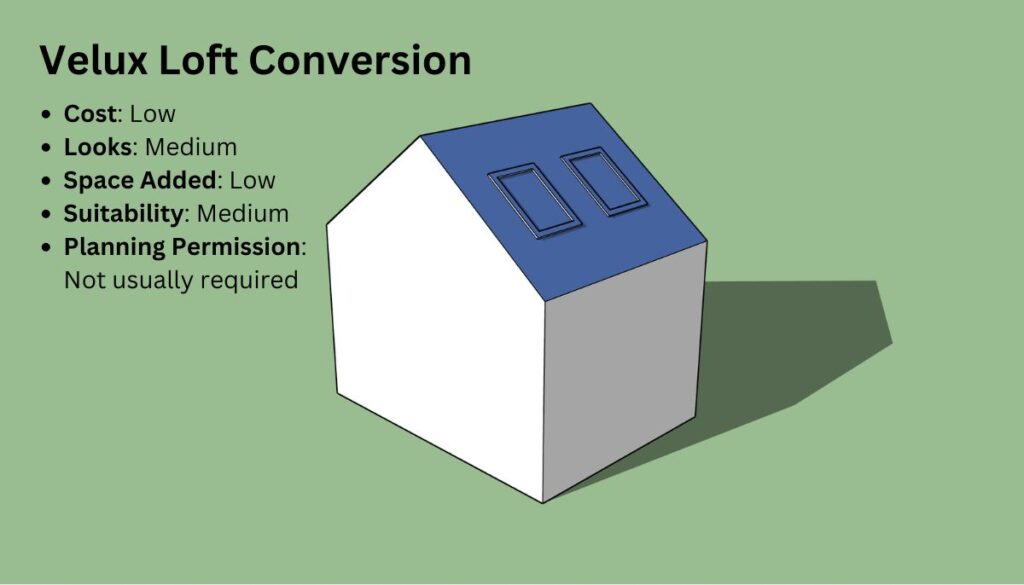
The simplest type of loft conversion. The existing loft is insulated and finished to make it livable, but no major construction takes place. Also known as a ‘roof light conversion’.
- Suitable for: homes with ample loft space, or basic loft conversions in smaller lofts (e.g. an office or a playroom).
- Downsides: less space and value added to property.
- Planning permission: not required in most cases.
Hip-to-gable
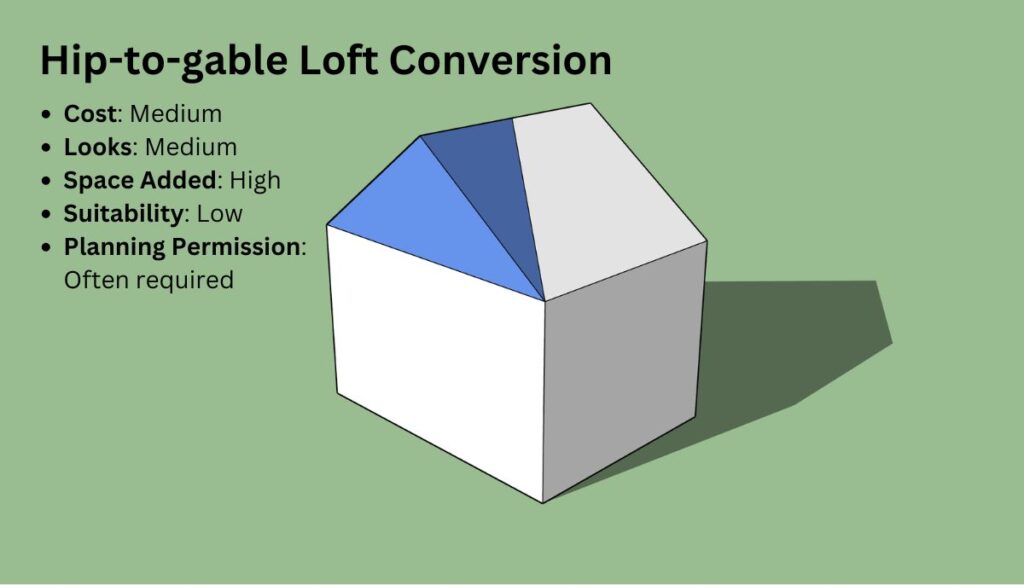
Loft conversion where the ‘hip’ of a roof is extended to become a gable (the picture makes it more obvious). Often combined with a dormer to give a huge space increase.
- Suitable for: detached or semi-detached houses/bungalows, with hipped roofs. Not suitable for mid- terraces
- Downsides: major alteration to roof, time and labour-intensive
- Planning permission: depends on the property.
Pitched Dormer

Somewhere between a Velux and a dormer conversion. Pitched dormers add a small amount of space, but most standing space comes from the existing loft. But they are elegant, and add lots of light.
- Suitable for: homes with large lofts, or in areas where pitched dormers are commonly found.
- Downsides: less space added than a full dormer
- Planning permission: not required in most cases.
Mansard
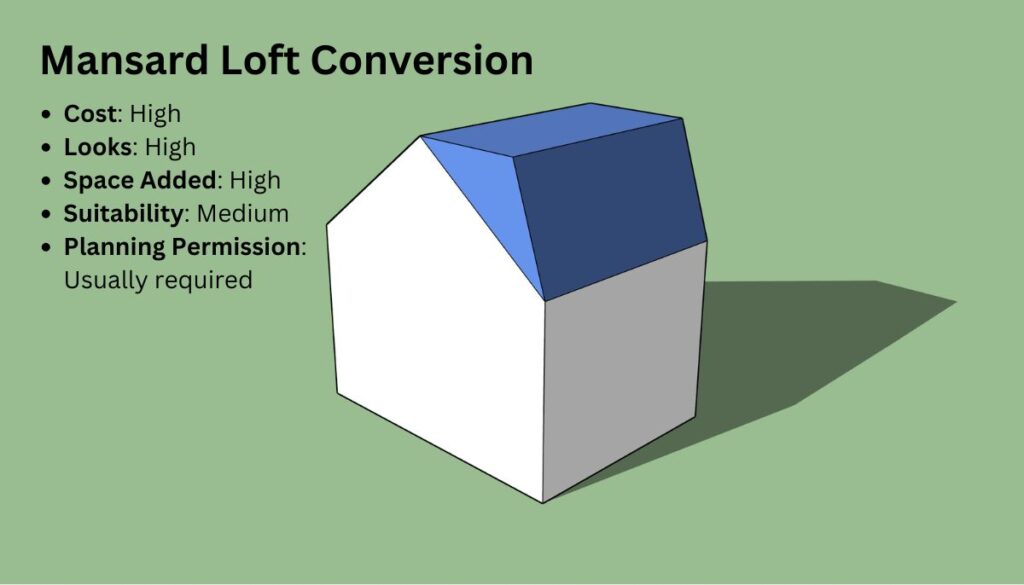
A large, expensive, but very attractive type of loft conversion. Has a flat roof and a 72 degree back wall, which essentially converts the loft into a whole new storey.
- Suitable for: most properties, especially in areas where Mansard roofs are common (e.g. London).
- Downsides: the cost, time, and planning permission.
- Planning permission: required.
Piggyback
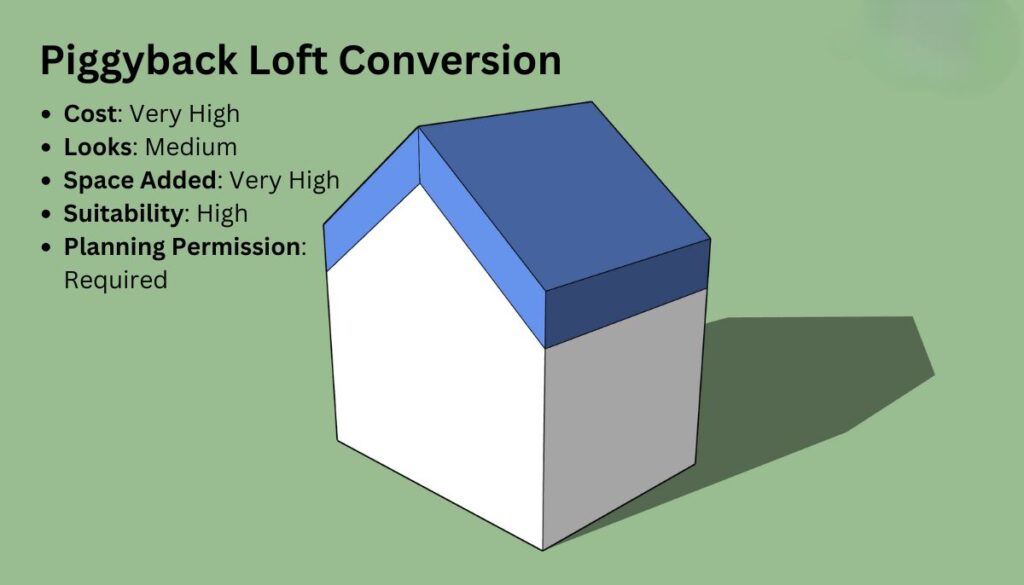
The most extreme type of loft conversion. Involves removing the existing roof, raising the brickwork on each side, and plonking a new roof back on. Adds significant value, as it can create dramatic increases from unlivable loft space.
- Suitable for: properties where the roof isn’t high enough for other conversion methods. Or where you want maximum standing room.
- Downsides: hugely expensive, labour-intensive, disruptive, and needs planning permission.
- Planning permission: required



